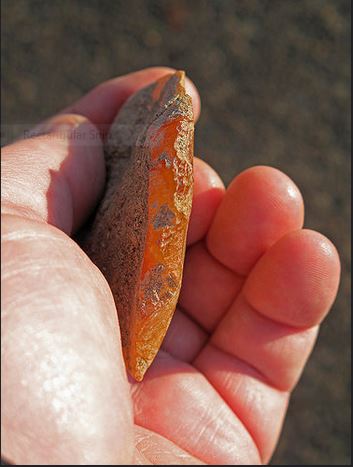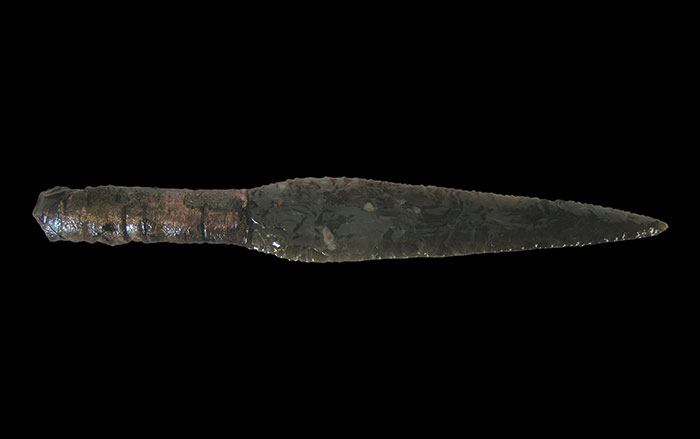
PORTLAND, OREGON—Near the Rimrock Draw Rockshelter, beneath a layer of ash from an eruption of Mt. St. Helens some 15,800 years ago, archaeologists have found a tool made of orange agate thought to have been used for scraping animal hides, butchering, and possibly even carving wood. “The discovery of this tool below a layer of undisturbed ash that dates to 15,800 years old means that this tool is likely more than 15,800 years old, which would suggest the oldest human occupation west of the Rockies,” said Scott Thomas, Bureau of Land Management Burns District archaeologist. A blood residue analysis of the tool revealed animal proteins consistent with the ancestor of the modern buffalo. The director of the excavation, Patrick O’Grady of the University of Oregon, adds that the excavation will be expanded to look for more artifacts underneath the ash layer. “We want to assemble indisputable evidence because these claims will be scrutinized by researchers. That said, the early discoveries are tantalizing,” commented Stan McDonald, BLM Oregon/Washington lead archaeologist. To read more about the earliest people to live in the New World, see "America, in the Beginning."









